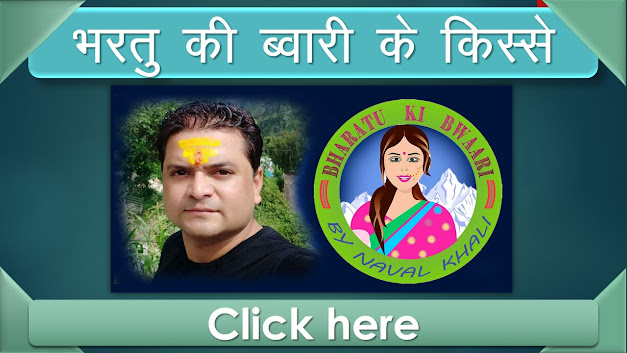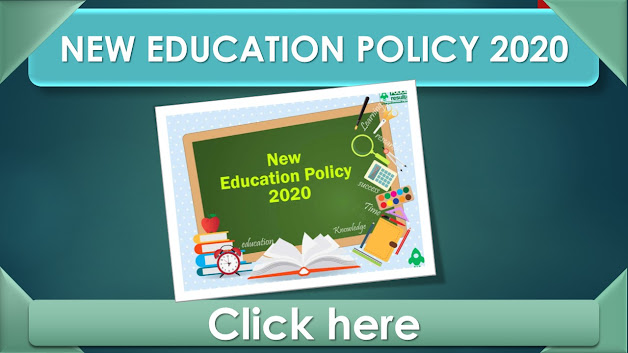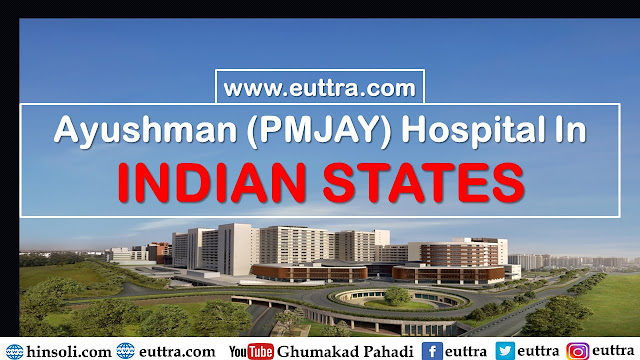16. Reimagining Vocational Education
16.1. The 12th Five-Year Plan (2012–2017) estimated that only a very small percentage of the Indian workforce in the age group of 19–24 (less than 5%) received formal vocational education Whereas in countries such as the USA the number is 52%, in Germany 75%, and South Korea it is as high as 96%. These numbers only underline the urgency of the need to hasten the spread of vocational education in India.
16.2. One of the primary reasons for the small numbers of students receiving vocational education is the fact that vocational education has in the past focused largely on Grades 11–12 and on dropouts in Grade 8 and upwards. Moreover, students passing out from Grades 11–12 with vocational subjects often did not have well-defined pathways to continue with their chosen vocations in higher education. The admission criteria for general higher education were also not designed to provide openings to students who had vocational education qualifications, leaving them at a disadvantage relative to their compatriots from ‘mainstream’ or ‘academic’ education. This led to a complete lack of vertical mobility for students from the vocational education stream, an issue that has only been addressed recently through the announcement of the National Skills Qualifications Framework (NSQF) in 2013.
16.3. Vocational education is perceived to be inferior to mainstream education and meant largely for students who are unable to cope with the latter. This is a perception that affects the choices students make. It is a serious concern that can only be dealt with by a complete re-imagination of how vocational education is offered to students in the future.
16.4. This policy aims to overcome the social status hierarchy associated with vocational education and requires integration of vocational education programmes into mainstream education in all education institutions in a phased manner. Beginning with vocational exposure at early ages in middle and secondary school, quality vocational education will be integrated smoothly into higher education. It will ensure that every child learns at least one vocation and is exposed to several more. This would lead to emphasizing the dignity of labour and importance of various vocations involving /Indian arts and artisanship.
16.5. By 2025, at least 50% of learners through the school and higher education system shall have exposure to vocational education, for which a clear action plan with targets and timelines will be developed. This is in alignment with Sustainable Development Goal 4.4 and will help to realize the full potential of India ’s demographic dividend. The number of students in vocational education will be considered while arriving at the GER targets. The development of vocational capacities will go hand-in-hand with the development of ‘academic’ or other capacities. Vocational education will be integrated in the educational offerings of all secondary schools in a phased manner over the next decade. Towards this, secondary schools will also collaborate with ITIs, polytechnics, local industry, etc. Skill labs will also be set up and created in the schools in a hub and spoke model which will allow other schools to use the facility. Higher education institutions will offer vocational education either on their own or in partnership with industry and NGOs. The B.Voc. degrees introduced in 2013 will continue to exist, but vocational courses will also be available to students enrolled in all other Bachelor’s degree programmes, including the 4-year multidisciplinary Bachelor ’s programmes. HEIs will also be allowed to conduct short-term certificate courses in various skills including soft skills. ‘Lok Vidya’, i.e., important vocational knowledge developed in India, will be made accessible to students through integration into vocational education courses. The possibility of offering vocational courses through ODL mode will also be explored.
16.6. Vocational education will be integrated into all school and higher education institutions in a phased manner over the next decade. Focus areas for vocational education will be chosen based on skills gap analysis and mapping of local opportunities. MHRD will constitute a National Committee for the Integration of Vocational Education (NCIVE), consisting of experts in vocational education and representatives from across Ministries, in collaboration with industry, to oversee this effort.
16.7. Individual institutions that are early adopters must innovate to find models and practices that work and then share these with other institutions through mechanisms set up by NCIVE, so as to help extend the reach of vocational education. Different models of vocational education, and apprenticeships, will also be experimented by higher education institutions. Incubation centres will be set up in higher education institutions in partnership with industries.
16.8. The National Skills Qualifications Framework will be detailed further for each discipline vocation and profession. Further, Indian standards will be aligned with the International Standard Classification of Occupations maintained by the International Labour Organization. This Framework will provide the basis for Recognition of Prior Learning. Through this, dropouts from the formal system will be reintegrated by aligning their practical experience with the relevant level of the Framework. The credit-based Framework will also facilitate mobility across ‘general’ and vocational education.
English Link
- NatNational Education Policy 2020ional
- NEP 2020 ,Part I. SCHOOL EDUCATION
- NEP 2020 ,Part I. Curriculum and Pedagogy in Schools: Learning Should be Holistic, Integrated, Enjoyable, and Engaging
- NEP 2020 ,Part I. Teachers
- NEP 2020 ,Part I, Equitable and Inclusive Education: Learning for All
- NEP 2020 ,Part I, Efficient Resourcing and Effective Governance through School Complexes/Clusters
- NEP 2020 ,Part I, Standard-setting and Accreditation for School Education
- NEP 2020 , Part II, HIGHER EDUCATION
- NEP 2020 , Part II, HIGHER EDUCATION, Institutional Restructuring and Consolidation
- NEP 2020 , Part II, HIGHER EDUCATION, Towards a More Holistic and Multidisciplinary Education
- NEP 2020 , Part II, HIGHER EDUCATION, Optimal Learning Environments and Support for Students
- NEP 2020 , Part II, HIGHER EDUCATION, Motivated, Energized, and Capable Faculty
- NEP 2020 , Part II, HIGHER EDUCATION, Equity and Inclusion in Higher Education
- NEP 2020 , Part II, HIGHER EDUCATION, Teacher Education
- NEP 2020 , Part II, HIGHER EDUCATION, Reimagining Vocational Education
- NEP 2020 , Part II, HIGHER EDUCATION, Catalysing Quality Academic Research in All Fields through a new National Research Foundation
- NEP 2020 , Part II, HIGHER EDUCATION, Transforming the Regulatory System of Higher Education
- NEP 2020 , Part II, HIGHER EDUCATION, Effective Governance and Leadership for Higher Education Institutions
- NEP 2020, Part III, OTHER KEY AREAS OF FOCUS
- NEP 2020, Part III, Adult Education and Lifelong Learning
- NEP 2020, Part III, Promotion of Indian Languages, Arts, and Culture
- NEP 2020, Part III, Technology Use and Integration
- NEP 2020, Part III, Online and Digital Education: Ensuring Equitable Use of Technology
- NEP 2020, Part IV, MAKING IT HAPPEN
हिंदी लिंक
- NatNational Education Policy 2020ional (राष्ट्रीय शिक्षा नीति 2020)
- एनईपी 2020, भाग I। स्कूल शिक्षा
- एनईपी 2020, भाग I। स्कूलों में पाठ्यचर्या और शिक्षाशास्त्र: सीखना समग्र, एकीकृत, आनंददायक और आकर्षक होना चाहिए
- एनईपी 2020, भाग I। शिक्षक
- एनईपी 2020, भाग I, समान और समावेशी शिक्षा: सभी के लिए सीखना
- एनईपी 2020, भाग I, स्कूल परिसरों / समूहों के माध्यम से कुशल संसाधन और प्रभावी शासन
- एनईपी 2020, भाग I, स्कूली शिक्षा के लिए मानक-सेटिंग और प्रत्यायन
- एनईपी 2020, भाग II, उच्च शिक्षा
- एनईपी 2020, भाग II, उच्च शिक्षा, संस्थागत पुनर्गठन और समेकन
- NEP 2020, भाग II, उच्च शिक्षा, एक अधिक समग्र और बहुविषयक शिक्षा की ओर
- एनईपी 2020, भाग II, उच्च शिक्षा, इष्टतम शिक्षण वातावरण और छात्रों के लिए समर्थन
- एनईपी 2020, भाग II, उच्च शिक्षा, प्रेरित, ऊर्जावान और सक्षम संकाय
- NEP 2020, भाग II, उच्च शिक्षा, समानता और उच्च शिक्षा में समावेश
- एनईपी 2020, भाग II, उच्च शिक्षा, शिक्षक शिक्षा
- एनईपी 2020, भाग II, उच्च शिक्षा, व्यावसायिक शिक्षा की पुनर्कल्पना
- एनईपी 2020, भाग II, उच्च शिक्षा, एक नए राष्ट्रीय अनुसंधान फाउंडेशन के माध्यम से सभी क्षेत्रों में गुणवत्तापूर्ण शैक्षणिक अनुसंधान को उत्प्रेरित करना
- NEP 2020, भाग II, उच्च शिक्षा, उच्च शिक्षा की नियामक प्रणाली को बदलना
- NEP 2020, भाग II, उच्च शिक्षा, उच्च शिक्षा संस्थानों के लिए प्रभावी शासन और नेतृत्व
- एनईपी 2020, भाग III, फोकस के अन्य प्रमुख क्षेत्र
- एनईपी 2020, भाग III, प्रौढ़ शिक्षा और आजीवन शिक्षा
- एनईपी 2020, भाग III, भारतीय भाषाओं, कला और संस्कृति को बढ़ावा देना
- एनईपी 2020, भाग III, प्रौद्योगिकी उपयोग और एकीकरण
- एनईपी 2020, भाग III, ऑनलाइन और डिजिटल शिक्षा: प्रौद्योगिकी का समान उपयोग सुनिश्चित करना
- एनईपी 2020, भाग IV, इसे संभव बनाना











Follow Us